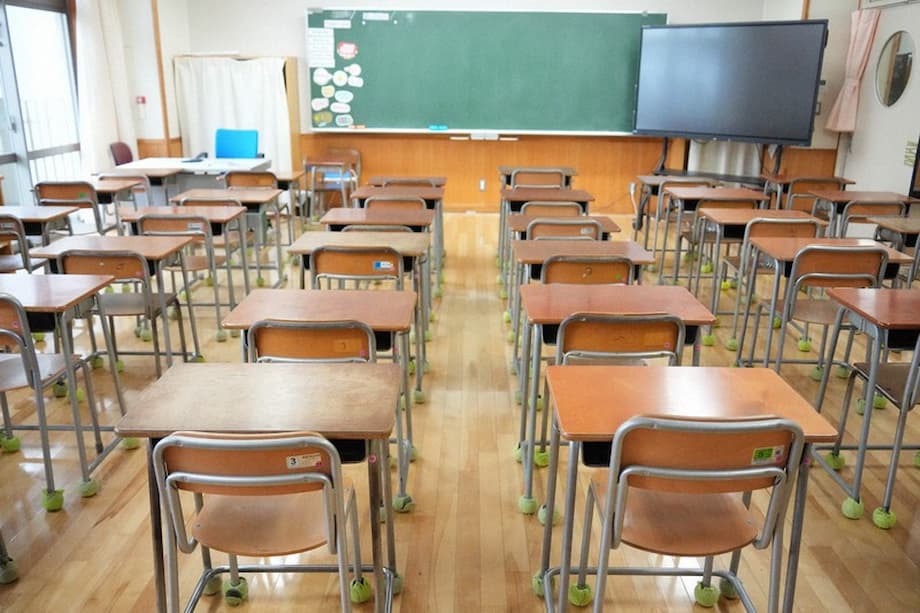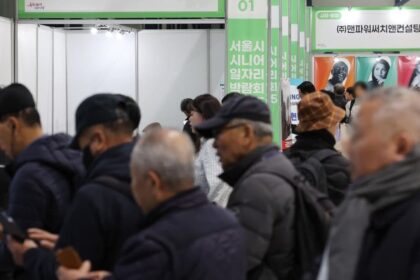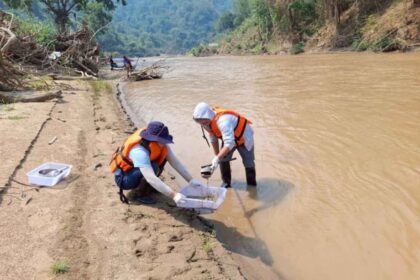Long hours persist despite reforms
Japanese teachers once again reported the longest working weeks among participating countries in the 2024 Teaching and Learning International Survey (TALIS), a major study led by the Organisation for Economic Co operation and Development (OECD). Full time teachers in Japanese elementary schools worked an average of 52.1 hours a week, while junior high school teachers reached 55.1 hours. The averages fell by about four hours compared with the last survey in 2018, yet they still sit far above international norms. The OECD averages were 40.4 hours for elementary teachers and about 41 hours for junior high teachers, leaving a double digit gap.
- Long hours persist despite reforms
- Why do hours remain high?
- What the latest TALIS 2024 data shows
- Teacher shortages are intensifying
- International comparisons and context
- The role of extracurricular clubs and student guidance
- Administrative load and digital tools
- Why actual teaching time is lower
- Health and well being risks of long hours
- Government reforms and next steps
- At a Glance
The ranking highlights a persistent challenge for Japan. On top of classroom lessons, teachers shoulder a broad array of responsibilities, many of them outside regular hours. The workweek reported to TALIS includes time spent at home in the evenings and on weekends. Despite the long weeks, Japanese teachers spend less time actually teaching than peers in many other places. Much of their day is absorbed by lesson preparation, administrative work, student guidance, and the supervision of extracurricular clubs.
Junior high teachers in Japan taught 17.8 hours a week on average, below the international average of 22.7 hours. Elementary teachers taught about 23.2 hours. By contrast, time devoted to non teaching tasks was high. Junior high teachers spent about 5.6 hours each week on extracurricular activities, well above the global average of 1.7 hours. Administrative tasks took about 5.2 hours for junior high teachers and around 4.5 hours for elementary teachers, again above the norms. These figures have edged down since 2018, but they remain elevated.
Why do hours remain high?
Japanese schools ask teachers to take on roles that stretch far beyond instruction. Many serve as homeroom leaders responsible for student guidance, daily pastoral care, and close communication with families. Teachers plan events, administer tests, write reports, coordinate with colleagues and local authorities, and manage health and safety procedures. They also supervise after school and weekend club activities, traveling to competitions and organizing practices. TALIS data shows junior high teachers devote about 5.6 hours a week to extracurriculars and 5.2 hours to administrative duties. Elementary teachers report about 4.5 hours on administrative work. Lesson preparation averaged 8.2 hours in Japan, compared with a global average of 7.4 hours.
Reforms over recent years have reduced some of these loads. Time spent on clubs fell by about 2.5 hours since 2018, lesson preparation by 0.7 hours, and administrative tasks by 0.9 hours. The decline supports government claims that work style changes are having an effect. Even so, the totals remain well above international averages. The combination of heavy non teaching tasks and relatively fewer teaching hours goes a long way toward explaining why Japanese teachers still report very long weeks.
What the latest TALIS 2024 data shows
TALIS is a global survey of teachers and principals conducted every five to six years by the OECD. The 2024 cycle covered 55 countries and regions at the junior high level and 16 at the elementary level. About 200 elementary schools and 200 middle schools were sampled per participating system. In Japan, responses came from 6,914 teachers and 402 principals across 403 schools. The latest round was delayed by a year because of the pandemic, making this the first update since 2018.
Elementary vs junior high at a glance
Elementary teachers reported an average of 23.2 hours of class time per week, while junior high teachers reported 17.8 hours. Communication with parents averaged about 1.4 hours a week at both levels, lower than the international average. Large portions of the week are given to planning, paperwork, student guidance, and club activities. The structure of the school day and the breadth of teacher responsibilities push total hours upward even when face to face teaching time is modest.
How TALIS measures time
The survey relies on self reported hours. Respondents count time worked at home in the evenings and on weekends. That approach captures the full scope of duties in Japan, where school events and club activities often run after hours and on holidays. It also reflects how teachers balance formal school time with additional tasks that are essential to the school community but are not performed in front of a class.
Teacher shortages are intensifying
Staffing pressure is adding to the strain. In the 2024 results, 40.7 percent of elementary principals in Japan said a shortage of teachers was hindering high quality education. For junior high schools, 35.6 percent reported the same. Both figures sit well above the international averages of 28.7 percent and 23.1 percent.
These shares have risen sharply compared with 2018. Fewer teachers mean larger classes to cover, less time for preparation and feedback, and more administrative burden on those who remain. Heavy workloads can then deter potential entrants, prolong vacancies, and deepen recruitment challenges. The shortage interacts with long working hours in a way that is difficult for schools to solve quickly.
International comparisons and context
Japan stands out even among systems known for long teacher weeks. At the junior high level, teachers in Japan worked about 9.8 hours more per week than counterparts in the United States, roughly 12 more than those in South Korea, and about 16.4 more than teachers in France. In elementary schools, Japan ranked first at 52.1 hours. New Zealand followed at 50.6 hours, and Australia at 46.3 hours.
Some countries that ask teachers to engage more deeply outside the classroom also report high totals. In Singapore, teachers reported a 47.3 hour week, higher than the OECD average, while spending considerable time on planning, counseling, co curricular activities, and communication with parents. The shared pattern is steady growth in tasks that support student development beyond direct instruction.
The role of extracurricular clubs and student guidance
Club activities, or bukatsu, are a hallmark of Japanese school life. Teachers supervise sports and cultural clubs after classes and on weekends, prepare students for tournaments, and travel for competitions. TALIS shows junior high teachers spend about 5.6 hours a week on extracurriculars, more than triple the international average. The commitment reflects Japan’s holistic view of education that emphasizes knowledge, character, and physical development together.
Policy makers have been shifting club oversight to community based programs and local sports associations. The idea is to preserve opportunities for students while easing after hours obligations for teachers. Time on clubs has fallen since 2018, yet many schools still depend on teachers, especially in areas where outside organizations are scarce. The balance between student access and sustainable workloads remains a live policy question.
Administrative load and digital tools
Paperwork and school management are another source of long weeks. Junior high teachers in Japan reported spending about 5.2 hours a week on administrative tasks, compared with an international average of 3 hours. Elementary teachers reported about 4.5 hours. Duties range from attendance and health records to internal reports, test administration, student guidance logs, and coordination for ceremonies and events. Even small tasks accumulate into substantial time.
Digital tools can help, although adoption varies. Only about 12 percent of Japanese principals said information and communication technology education was lacking, a figure below the global average. Yet classroom use of artificial intelligence remains limited. About 16 percent of elementary teachers and 17.4 percent of junior high teachers in Japan said they used AI in the past year, compared with more than 36 percent globally. Japan was near the bottom on that measure. In the United Arab Emirates and Singapore, roughly three quarters of teachers reported using AI in classes. Many Japanese educators cite concerns about bias and data privacy when deciding how to use the technology.
Why actual teaching time is lower
Lower classroom hours do not mean teachers spend less time with students. Japanese schools include homeroom activities, moral education, integrated studies projects, and shared events in the regular day. Students clean classrooms and corridors, a long standing practice that teachers supervise. Lunchtime often carries educational goals related to nutrition and social behavior, with teachers guiding those routines.
These duties are valued for shaping well rounded students, yet they reduce the share of the week given to front of class instruction. The workweek remains long because preparation, administration, and extracurricular responsibilities sit on top of those day to day interactions with students.
Health and well being risks of long hours
Long weeks carry risks for mental and physical health. A nationwide study of public junior high teachers found that about 59.6 percent worked 11 hours or more per day, and longer hours were associated with higher stress responses among tenured and fixed term teachers. The pattern looked different for vice principals, who reported very long hours but did not show the same increase in stress indicators, a finding the researchers linked to role specific factors, possible workaholism, or other influences.
Japanese labor law sets a general cap of 720 hours of overtime per year for many workers, but that threshold did not apply to public school teachers at the time of the study. Researchers warned that some educators exceed levels associated with death from overwork. The risks include burnout, declining retention, and safety concerns for staff and students.
Government reforms and next steps
Authorities have pursued work style reforms for years. The education ministry introduced guidelines on overtime in 2019, established limits in principle, and urged schools to monitor hours closely. The ministry also encouraged a shift of school clubs to community organizations and the use of support staff to handle some non teaching tasks. The latest TALIS results, which show an average decline of about four hours since 2018, suggest these efforts are making a difference.
New goals to 2029
Policymakers have set a new target to reduce average teacher overtime to 30 hours a month by fiscal 2029. Reaching that goal will likely require sustained hiring to address shortages, simpler administrative workflows, clear boundaries for parent communications, and thoughtful adoption of digital tools. Budgets, local capacity to host community clubs, and the redesign of staff roles will shape how quickly schools can relieve pressure without weakening student support.
At a Glance
- Elementary teachers in Japan reported 52.1 hours a week, junior high teachers 55.1, in TALIS 2024.
- These totals exceeded the international averages by 11.7 hours for elementary and 14.1 hours for junior high.
- Teaching time was lower than peers, at 23.2 hours for elementary and 17.8 hours for junior high.
- Junior high teachers spent about 5.6 hours on extracurriculars and 5.2 hours on administrative tasks each week; elementary teachers spent about 4.5 hours on administrative work.
- Average weekly working time fell by about four hours compared with 2018.
- Principals citing teacher shortages reached 40.7 percent in elementary and 35.6 percent in junior high, above global averages of 28.7 percent and 23.1 percent.
- AI use in classes by teachers was about 16 to 17.4 percent in Japan, versus more than 36 percent globally, while the United Arab Emirates and Singapore were near 75 percent.
- Work style measures introduced in 2019 include guidance on overtime limits and a shift of club activities to community organizations.
- The government aims to cut average overtime to 30 hours per month by fiscal 2029.
- New Zealand and Australia trailed Japan in elementary hours at 50.6 and 46.3, respectively.












